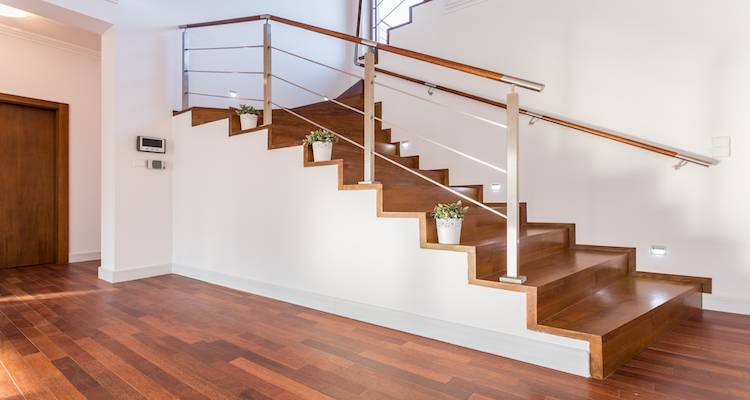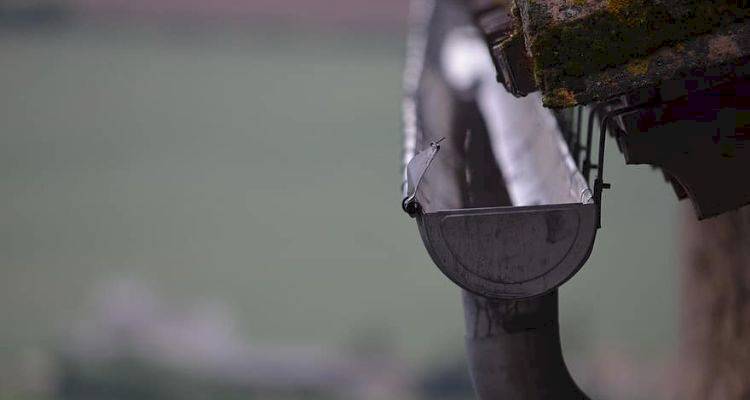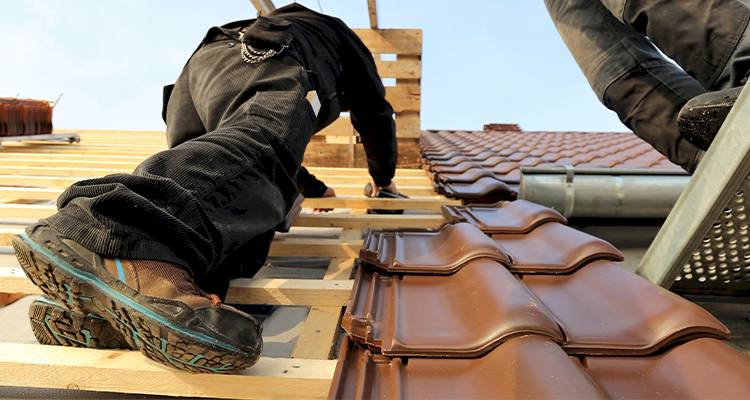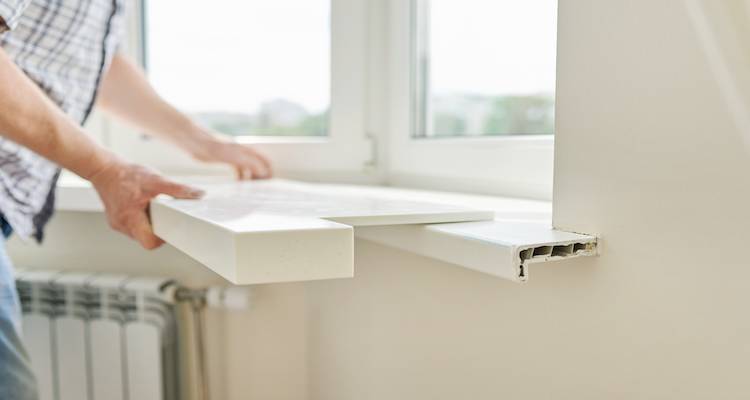Load Bearing Wall Removal Cost
- The average cost of removing a load bearing wall is around £1,500.
- The job will take around 1 to 3 days to complete.
- A complete pricing breakdown which includes cost factors to consider.
- How long the job should take and an overview of the types of work involved.
- How to find and hire a tradesperson to remove a load bearing wall.
Do you need to remove a load bearing wall?
Take a look at this cost guide, where we can point you in the right direction of a builder and also give you an average estimate of how much it'll cost.
For all this and more, continue below!
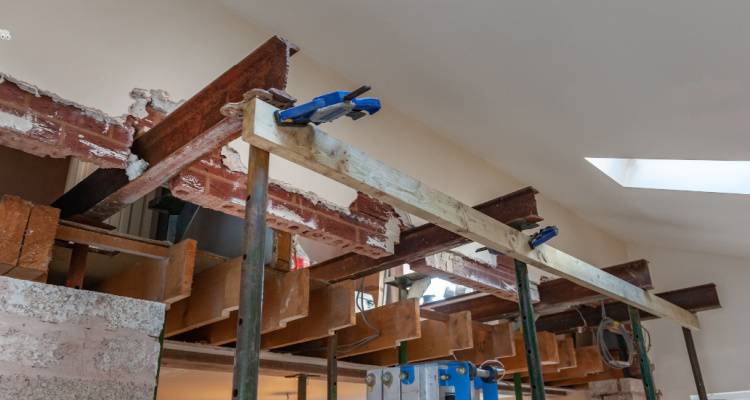
£1,500
Table of Contents
- How Much Does It Cost to Remove a Load Bearing Wall?
- Labour Cost to Remove Load Bearing Wall & Timescales
- Factors That Impact Load Bearing Wall Removal Costs
- What's Involved in Removing a Load Bearing Wall?
- Can I Remove a Load Bearing Wall Myself?
- Building Regulations & Planning Permission for Removing a Load Bearing Wall
- Do I Need a Party Wall Agreement?
- How Can You Tell If a Wall is Load-Bearing?
- Do I Need an RSJ Beam?
- Benefits of Removing a Load Bearing Wall
- Checklist: Hiring a Tradesperson to Remove a Load Bearing Wall
- FAQs
How Much Does It Cost to Remove a Load Bearing Wall?
Removing a load bearing wall in your home is a lot different from removing a non-load bearing wall. Load-bearing walls are put in place to support the weight of the house, so removing it can be dangerous if you don’t do it correctly.
The average cost to remove a load bearing wall is around £1,200 to £1,750, however, this price can vary depending on a number of factors including your location, and the size of the wall to be removed. Those who are in London can expect to pay more.
The above price is for the cost of removing the load bearing wall alone. However, there are some other costs that you may need to think about with this type of job.
Load Bearing Wall Removal Prices
Below is a list of the average costs of removing a load bearing wall:
| Job | Cost | Duration |
|---|---|---|
| Single Doorway – (roughly 1m) | £1,000–£1,500 | 1–1.5 days |
| Double Doorway – (roughly 2m) | £1,250–£1,750 | 1.5–2 days |
| Large Open Plan – (roughly 4m) | £1,500–£2,000 | 2–3 days |
Supply Cost of Removing a Load Bearing Wall
Below is a list of supply costs for removing a load bearing wall:
| Material | Cost |
|---|---|
| Rolled Steel Joist (RSJ) | £800–£1,000 |
| Lintel Beams (concrete) | £7–£400 |
| Lintel Beams (steel) | £8–£1,000 |
Additional Load Bearing Wall Removal Costs
There are a number of additional costs that you may need to consider when it comes to removing a load bearing wall. Below is a list of the additional costs that may accompany this type of job:
- Redecorating Costs — On average, a painter and decorator will charge around £150 to £400 per day. Prices in London are likely to be a little higher than this. The price you pay will depend on things such as your location, the size of the room, and your choices of decoration.
- Party Wall Agreement Costs — If you live in a terraced or semi-detached house, a party wall is jointly owned so any changes to this wall will be subject to a party wall agreement. This involves hiring a professional surveyor who will usually charge around £120 to £250 per hour.
- New Door — If you have removed your wall so that you can add in a door, then you will need to budget for the cost of the door. The cost you pay for this will depend on the type of door that you choose. For example, a softwood door costs around £40 to £50, whereas a hardwood door will cost around £70 to £80 on average.
- Move a Radiator — After your load bearing wall has been removed, you may need to move a radiator. A professional plumber will usually charge around £150 to £400 on average to move a radiator, and the job will usually take around 2 hours.
- Reposition Light Switches and Sockets — To install a light switch or plug socket, an electrician will charge around £50 to £95 per hour. However, this may depend on your location and the difficulty of the job.
Labour Cost to Remove Load Bearing Wall & Timescales
Most of the work of removing a load bearing wall can be carried out by an experienced local builder, however, you will also need a structural engineer and possibly an electrician and a plumber depending on the location of the wall to be removed. A lot of people will choose to handle the final decorating work themselves, but some will also need the services of a painter & decorator.
When you remove a load bearing wall, you will need to install an RSJ. Before getting a quote for an RSJ installation, you need to remember that part of installing an RSJ is the expert calculations required by a structural engineer.
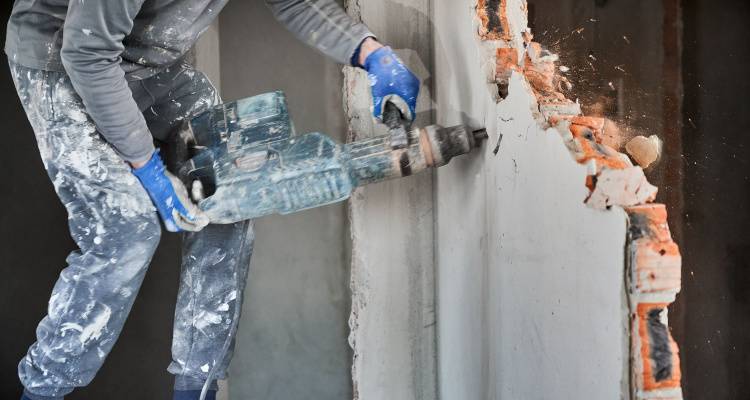
Plus, you then need a skilled builder to carry out the work properly to the engineer’s calculations. Note that this type of work will always create a huge mess no matter how careful the builders are. A structural engineer will charge around £90 to £200 per hour to calculate the required strength of your RSJ.
Removing a load bearing wall takes around 1-3 days depending on the size and location of the wall. The labour costs for removing a load bearing wall will usually fall somewhere between £150 to £250 per day and builders will work in pairs for this type of work.
You will also need to bring in a plasterer to finish the room once the wall has been removed and an RSJ has been put in its place. You can expect the cost of a plasterer to be around £150 to £250 per day. The time they spend on plastering the room will depend on the size of the area that needs plastering.
Factors That Impact Load Bearing Wall Removal Costs
Several factors affect the cost of removing a load bearing wall. Below is a list of the cost factors that you may need to be aware of:
Size of the Job
The size of the job can affect the overall cost as the bigger the job, the more you can expect to pay for the work. If you want to knock down a wall to create more open space, this can cost around £1,500 to £2,000 whereas to knock through a single doorway, you can expect to pay around £1,000 to £1,500.
Location of Property
The location of your property can affect the overall cost of the job. Those located in London may expect to pay around £800 to £1,200 more for the overall job than those located in the North or other parts of the UK.
Type/Size of RSJ Beam
RSJ size depends on the dimension of the wall that you’re knocking through. If you are knocking through a single doorway, expect to pay around £700 to £900 for an RSJ whereas a large open plan of around 4m may cost up to £900 to £1,100 for an RSJ.
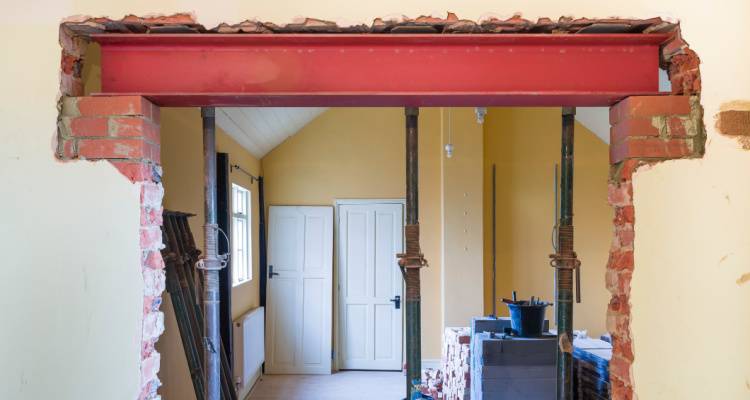
Waste Removal
There will be a lot of waste removal involved in a load bearing wall removal job. The amount will depend a lot upon the size of the wall. However, the average cost for waste removal on this type of job is usually around £100 to £175.
Floor Levelling
Consider levelling off flooring, especially in older homes. Floors on either side may not align and may need levelling. This often costs around £10 to £25 per square metre. The actual cost will depend on the materials used.
What's Involved in Removing a Load Bearing Wall?
You should always hire a professional to remove a load bearing wall for you. Below is an overview of the steps that a professional builder and structural engineer will take:
Before the Job
- A structural engineer will carry out a survey on the wall to calculate the correct measurements for your supporting RSJ beam. They will also check the wall for any cables or pipes before the demolition begins.
During the Job
- Your builder will remove or switch off any cables or pipes that run through the wall so that they are no longer in use.
- They will protect the room from dust with plastic sheeting and dust sheets, taping over the gaps in the door as well to avoid allowing the dust to spread to other rooms of the house.
- First, they will install temporary support. Using a hammer and bolster, they will remove around 18 inches of ceiling board, right up to where the board joins the wall that is going to be demolished. This will expose rafters, cables, and pipes.
- Once the rafters are exposed, they will then insert the acrow support bars. They will lift a length of timber that's roughly the size of the room up into the rafters and secure it there temporarily with a couple of wood screws at each end. Then they will raise the acrow supports into position. They will need one at each end and potentially one in the middle if it is a large room. They'll need to do this on both sides of the wall.
- Now that the ceiling is fully supported, they can begin removing any doorframes using a saw and crowbar.
- Only after temporary supports are in place will they begin controlled demolition. They will start at the top of the wall structure and remove everything that is above head height. Bricks and blocks may fall, so they will ensure that the floor is protected.
- They will use a hammer and bolster to hack away the plaster at the top of the doorway to expose the lintel. Then, they will chip away all of the brickwork and cement that surrounds the lintel until it is disconnected from the rest of the wall.
- Once the lintel is disconnected from the wall, it can be lifted clear and disposed of.
- They will then remove the brickwork from the top of the wall, cleaning up as they go along to avoid any potential injuries. They will demolish and remove the bricks and mortar from the top and work their way along.
- Any pipes and cable work in the wall will be worked around until they are in a position to be removed, then they will remove them.
- They will continue to remove the wall blocks, but will leave sections around where the RSJ will bear until after the beam is installed.
- All the brickwork in the side walls needs to be removed to allow access for the RSJ and the padstones that it sits on.
- They will lay the padstones down in the prepared pockets, ensuring they are properly bedded on mortar according to the engineer's specifications.
- They will then lift the RSJ into position on the padstones to the height and placement specified by the structural engineer's calculations.
- Once the RSJ is in position, they will measure the distance from both ends to the wall that is parallel to ensure that it is perpendicular. Then, they will use a spirit level to ensure that it is sitting level.
- They will then put temporary acrows in place once again to support the RSJ. They will check for any gaps and fill them in with extra blocks. Then, they will brick up the wall surrounding the ends of the RSJ to secure it in place.
- Only after the RSJ is fully secured and bearing the load will they complete the remaining demolition.
After the Job
- Finally, they will re-plaster the ceiling and any parts of wall that are exposed and then you can decorate the room as you wish.
Can I Remove a Load Bearing Wall Myself?
Removing an internal wall can be a DIY job; however, a load bearing wall is a different story. Calculations are required to support the weight above. For these reasons, it’s best to leave this type of job up to the professionals.
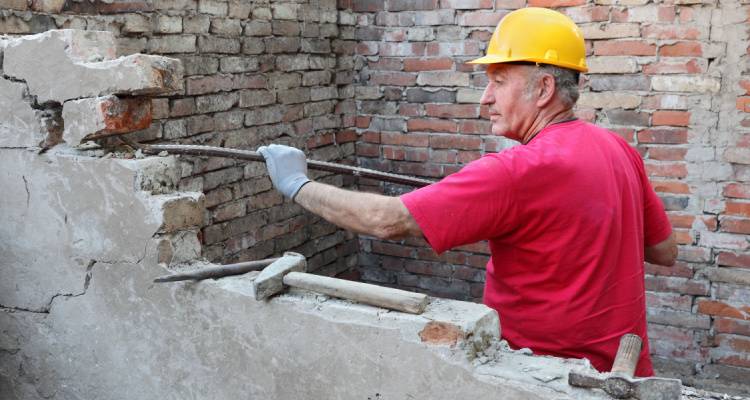
You will need to bring in a structural engineer to work out the positioning of your new support beam so that the structure of your home remains intact. You should also hire professional builders to carry out the demolition of the wall and to install a new RSJ in its place.
Hiring professionals ensures the job is completed safely and correctly. It will also help to keep your long-term costs down as a professional job will last much longer and will also prevent any extra costs that may occur due to structural complications.
Building Regulations & Planning Permission for Removing a Load Bearing Wall
If you are removing a load bearing wall you won’t usually need planning permission; however, you will need building regulation approval.
Building control ensures the work complies with building regulations. The work on removing a load bearing wall can usually be completed on a building notice. For this work, you won’t usually need full architectural plans.
Do I Need a Party Wall Agreement?
A party wall is a wall that divides you and your neighbour. Avoid working on or near a party wall; if you must, then comply with the Party Wall Act.
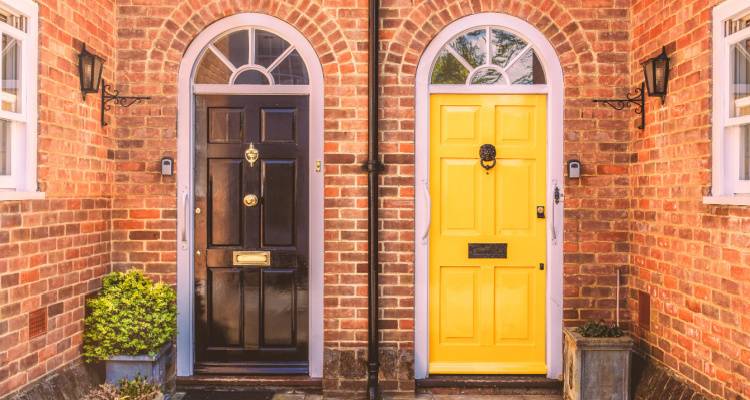
This act provides a framework that prevents and resolves any disputes when it comes to party walls. Your neighbours must consent under the Act before work begins.
How Can You Tell If a Wall is Load-Bearing?
A load bearing wall supports the weight of a floor or a roof structure. You should seek the help of a professional when it comes to determining if a wall is load-bearing or not, however, there are a few clues that you can look out for.
Generally, if a wall is parallel to the floor joists above it, it is not a load bearing wall. However, if you find that the wall runs perpendicular to the joists, then there is a decent chance that this wall is load-bearing.
Partial walls can sometimes be load-bearing. For example, a builder may have installed a beam to span across the opening section which carried the load above. So with this in mind, you can’t always assume that a partial wall isn’t load-bearing.
Exterior walls are almost always load-bearing.
Do I Need an RSJ Beam?
If you are removing a load bearing wall, you will need an RSJ beam.
A rolled steel joist is a steel beam which supports the weight above. The cost to install an RSJ is around £1,800 to £2,200.
When you remove a load bearing wall, you must replace it with an RSJ beam to take the weight of the rest of the home above. If not, you risk structural failure.
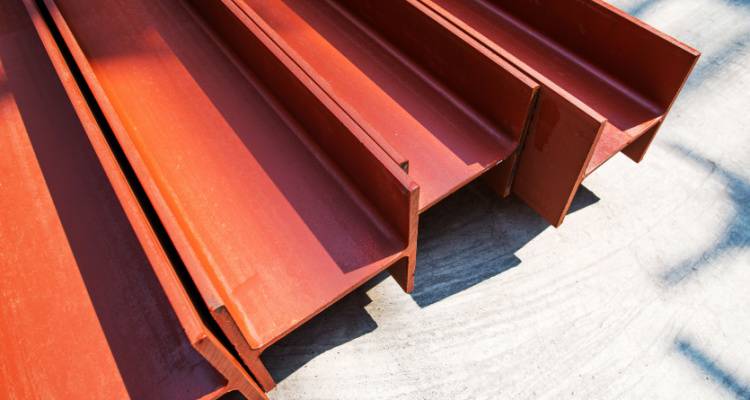
There are a number of different types of RSJ. The following list explains a little bit about each one:
- Universal Beams
- Universal Columns
- Parallel Flange Channels
- Steel Lintels
Benefits of Removing a Load Bearing Wall
There are a number of benefits to removing a load bearing wall. Below are some of the main reasons why someone might want to carry out this type of job:
Open-plan Living
You may want to remove a load bearing wall to create open-plan living. Open-plan living is a great feature in modern homes. By removing a wall and creating open-plan living space, you can truly transform your home.
Increased Space
You may want to remove a load bearing wall to create more space in your home. Some walls can take up a lot of room in the home, and so removing them can create a lot more living space for you.
Increased Property Value
When you remove a load bearing wall, you can really open up your home so it looks great. This can increase the value of your home and make it a lot more desirable to new buyers.
Checklist: Hiring a Tradesperson to Remove a Load Bearing Wall
There are a few things you will need to consider before hiring someone to replace your load bearing wall. Below is a list of some of the main things that you should consider when looking for the right contractor for the job:
- Does the contractor offer any guarantees with their work?
- How much is the work to complete? – Ask for a breakdown of costs so you can ensure you are paying a good price for each element of the job.
- Is the contractor experienced in removing load bearing walls?
- How many years of experience does the contractor have in removing load bearing walls?
- How many contractors will carry out the job?
- Will the contractor fix any issues that may arise?
- Will the contractor take care of any relevant waste removal?
- Will the contractor install an RSJ beam for you or do you need to hire another contractor?



